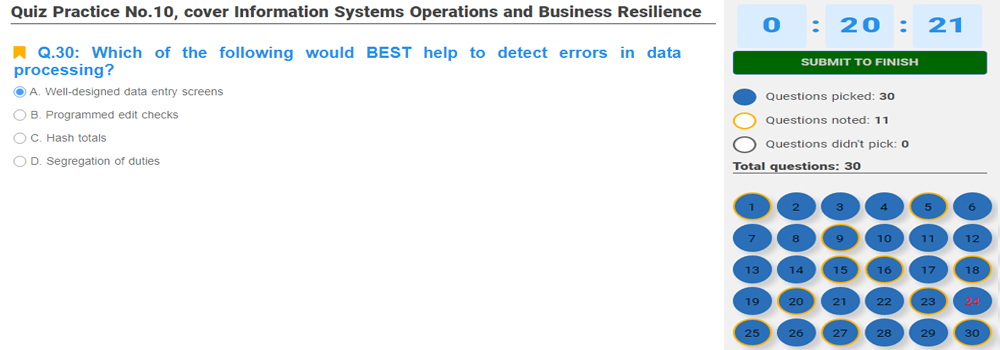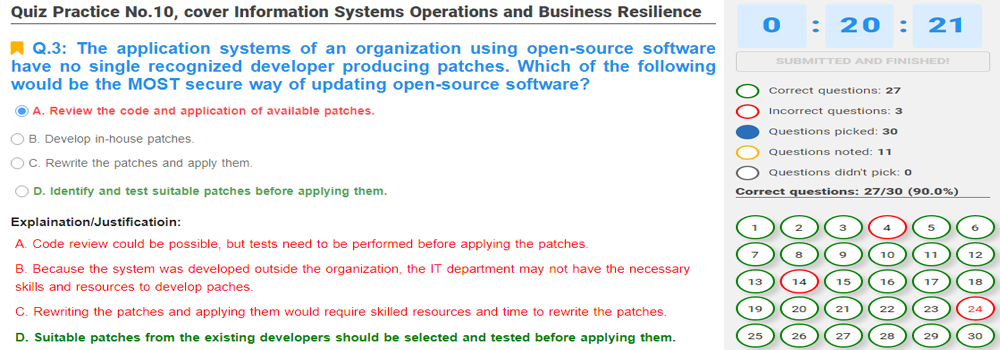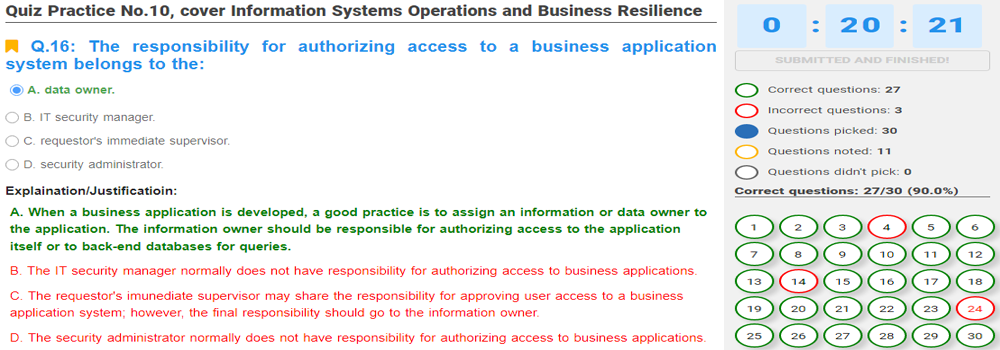[1Z0-133 DUMP UPDATED JULY, 2024] Oracle WebLogic Server 12c: Administration I Cert code: 1Z0-133, Questions of the exam: 77, Minutes of the exam: 120, Correct to pass: 64%.
[1Z0-133 DUMP UPDATED JUNE, 2024] Oracle WebLogic Server 12c: Administration I Cert code: 1Z0-133, Questions of the exam: 77, Minutes of the exam: 120, Correct to pass: 64%.
[1Z0-133 DUMP UPDATED MAY, 2024] Oracle WebLogic Server 12c: Administration I Cert code: 1Z0-133, Questions of the exam: 77, Minutes of the exam: 120, Correct to pass: 64%.
[1Z0-133 DUMP UPDATED MARCH, 2024] Oracle WebLogic Server 12c: Administration I Cert code: 1Z0-133, Questions of the exam: 77, Minutes of the exam: 120, Correct to pass: 64%.
[1Z0-133 DUMP UPDATED JANUARY, 2024] Oracle WebLogic Server 12c: Administration I Cert code: 1Z0-133, Questions of the exam: 77, Minutes of the exam: 120, Correct to pass: 64%.
SOME NOTES ABOUT ORACLE WEBLOGIC SERVER 12C: ADMINISTRATION I:
Oracle WebLogic Server 12c: Administration I [1Z0-133] is an important and mandatory certification on your path to becoming an expert in your field.
To get this certificate, you need to firmly and confidently grasp the content listed below. Then, you need to pass the exam directly on ORACLE's system. This exam has a duration of 120 minutes, with 77 questions. You need to answer correctly at least 64% of the total questions on the exam.
Below are the contents that you need to grasp firmly and confidently before registering to take the exam on ORACLE's system:
1. Overview of WebLogic Server
1.1. Explain the WebLogic Server terms: domain, server, machine and cluster.
1.2. Explain the difference between the administration server and the managed servers.
1.3. Describe the administrative tools: Administration Console, WLST, WLDF, Monitoring Dashboard.
2. Installing and Patching WebLogic Server
2.1. Determine supported configurations for WebLogic Server.
2.2. Install WebLogic Server in graphical mode.
2.3. Install WebLogic Server silently.
2.4. Describe the installation directory structure.
2.5. Apply a patch to WebLogic Server by using OPatch.
3. Creating Domains
3.1. Describe a domain’s file system.
3.2. Create a domain by using the Configuration Wizard.
3.3. Configure machines, servers, and clusters by using the Configuration Wizard.
3.4. Copy a domain to another computer with the pack and unpack utilities.
4. Starting Servers
4.1. Start and stop servers with standard scripts.
4.2. Identify and resolve problems with server startup.
4.3. Customize start and stop scripts, including the CLASSPATH.
4.4. Restart a failed server on a different machine.
5. Using the Administration Console
5.1. Access the WebLogic Server Administration Console.
5.2. Identify the components of the Administration Console.
5.3. Update Administration Console preferences.
5.4. Use the Administration Console change center.
5.5. Create and configure servers by using the Administration Console.
6. Configuring JDBC
6.1. Describe WebLogic Server’s JDBC architecture.
6.2. Describe WebLogic Server’s JNDI architecture.
6.3. Compare the different types of data sources.
6.4. Compare the different data source transaction options.
6.5. Create and configure a generic data source.
6.6. Tune a data source’s connection pool.
6.7. Create and configure a GridLink data source.
7. Monitoring a Domain
7.1. Configure WebLogic Server logs.
7.2. Interpret a server log file entry.
7.3. Create and apply a log filter.
7.4. Enable WebLogic Server debugging output.
7.5. Monitor WebLogic Server health and performance.
7.6. Monitor JDBC data sources.
7.7. Access diagnostic charts in the Monitoring Dashboard.
8. Node Manager
8.1. Describe the architecture and capabilities of the Node Manager.
8.2. Create a Node Manager with the Configuration Wizard.
8.3. Configure properties for the Java Node Manager.
8.4. Describe the Java Node Manager directory structure.
8.5. Enroll a Node Manager with a domain.
8.6. Start and stop a Node Manager.
8.7. Start and stop managed servers by using the Administration Console.
9. Deploying Applications
9.1. Deploy an application.
9.2. Start a deployed application.
9.3. Stop a deployed application.
9.4. Undeploy an application.
9.5. Redeploy an application.
9.6. Use the test links for an application supplied by the Administration Console.
9.7. Monitor a deployed application.
9.8. Use the Monitoring Dashboard’s built-in application view.
9.9. Load test an application with The Grinder console given a script.
10. Network Channels and Virtual Hosts
10.1. Configure a WebLogic Server network channel.
10.2. Monitor a network channel.
10.3. Configure WebLogic Server to use an administration port.
10.4. Configure a virtual host for WebLogic Server.
11. Creating and Configuring Clusters
11.1. Describe basic and multi-tier cluster architectures.
11.2. Create a cluster by using the Configuration Wizard.
11.3. Create and configure a cluster by using the Administration Console.
11.4. Create and configure a dynamic cluster.
11.5. Create and configure a server template.
11.6. Describe how a dynamic cluster calculates listen ports and machines for generated servers.
12. Cluster Proxies and Sessions
12.1. Install Oracle HTTP Server with the Web Tier installer.
12.2. Configure Oracle HTTP Server as a WebLogic Server cluster proxy.
12.3. List the options for HTTP session failover.
12.4. Configure in-memory session replication.
12.5. Configure replication groups.
13. Cluster Communication, Planning and Troubleshooting
13.1. Explain the difference between unicast and multicast cluster communication.
13.2. Configure replication channels by using the Administration Console.
13.3. Describe planning for a cluster.
13.4. Monitor a cluster.
14. Transactions
14.1. Explain WebLogic Server`s role in managing transactions.
14.2. Configure WebLogic Server transactions (JTA).
14.3. Configure the WebLogic Server default store used for transaction logs.
14.4. Configure a database persistent store for WebLogic Server transaction logs.
14.5. Monitor WebLogic Server transactions.
15. WebLogic Server Security
15.1. List some of the WebLogic Server security providers and what they do.
15.2. Describe basic LDAP architecture.
15.3. Configure an external LDAP authentication provider for WebLogic Server.
15.4. Describe how multiple authentication providers can be used with WebLogic Server.
16. Backing Up a Doman and Upgrading WebLogic Server
16.1. Back up a WebLogic Server domain.
16.2. Restore a WebLogic Server domain.
16.3. Define Managed Service Independence mode.
16.4. Describe the process to upgrade WebLogic Server 11g to 12c.
16.5. Run the WebLogic Server Reconfiguration Wizard as part of the upgrade process.
GOODLUCK TO YOU!!!




